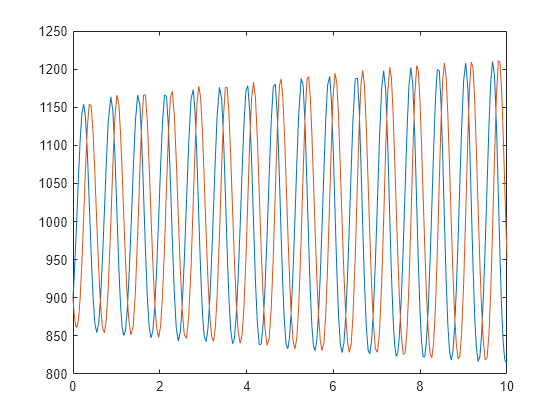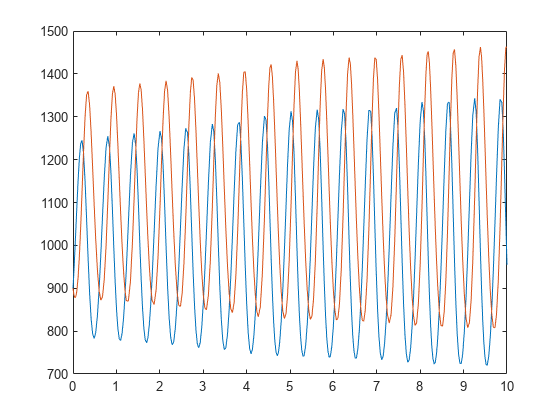simulate
Simulate exported SimBiology model
Syntax
Description
[
simulates a model, using the default initial values specified by
t,x,names]
= simulate(model)model.InitialValues (which are always equal to the
InitialValue property on the corresponding ValueInfo
object). simulate returns:
t, time samples.x, simulation data that contain variation in the quantity of states over time.names, column labels of simulation datax.
You can set additional simulation options using the property
SimBiology.export.Model.SimulationOptions.
[
simulates a model, using the values specified in t,x,names]
= simulate(model,initialValues)initialValues as the
initial values of the simulation.
simDataObj = simulate(___)SimData object
simDataObj using any of the input arguments in the previous syntaxes.
The simDataObj contains time and state data, as well as metadata, such
as the types and names for the reported states. You can access the time, data, and names
stores in simDataObj using the properties
simDataObj.Time, simDataObj.Data, and
simDataObj.DataNames, respectively.
Examples
Input Arguments
Output Arguments
Version History
Introduced in R2012b

